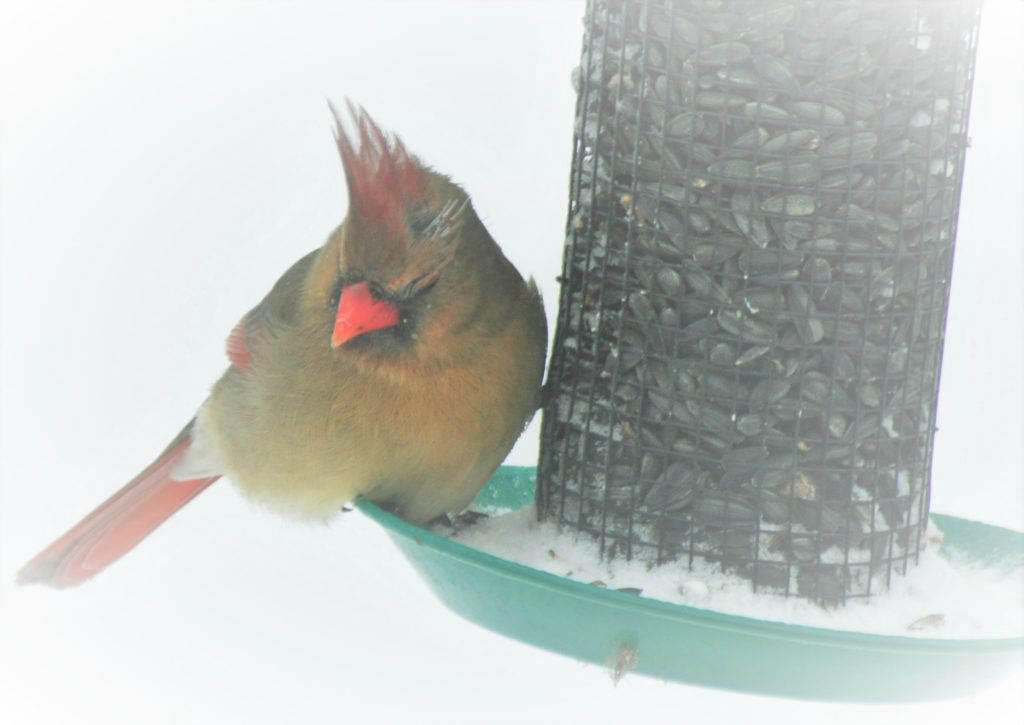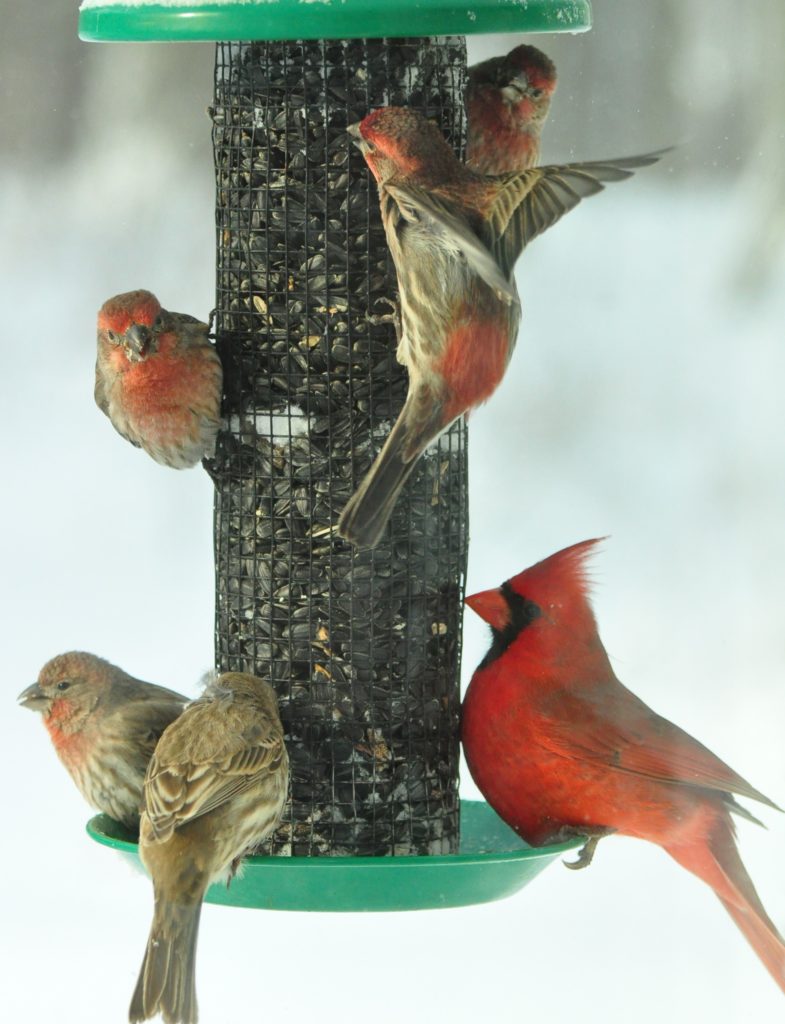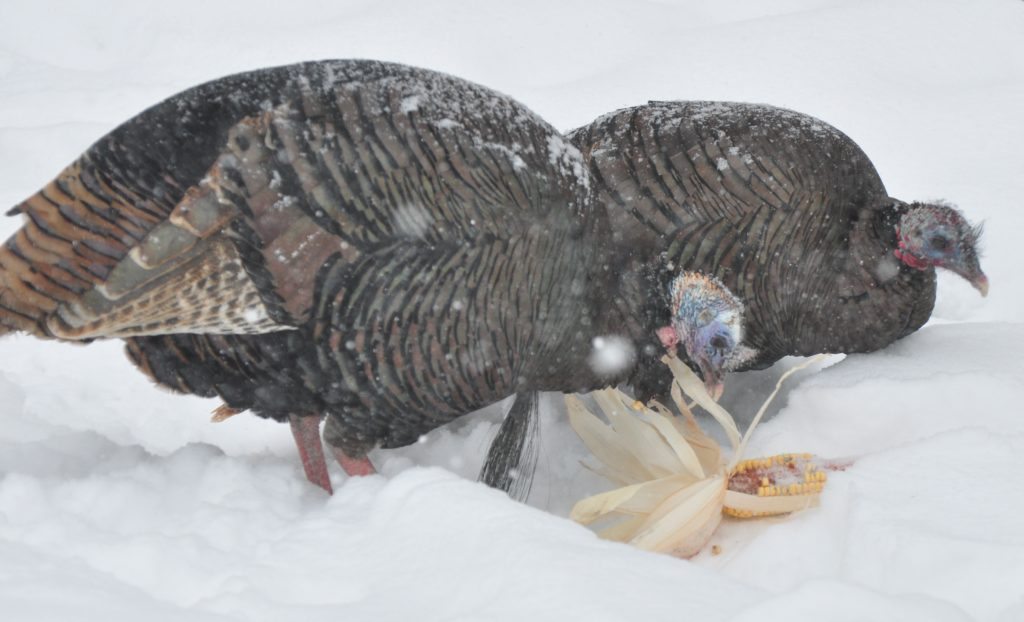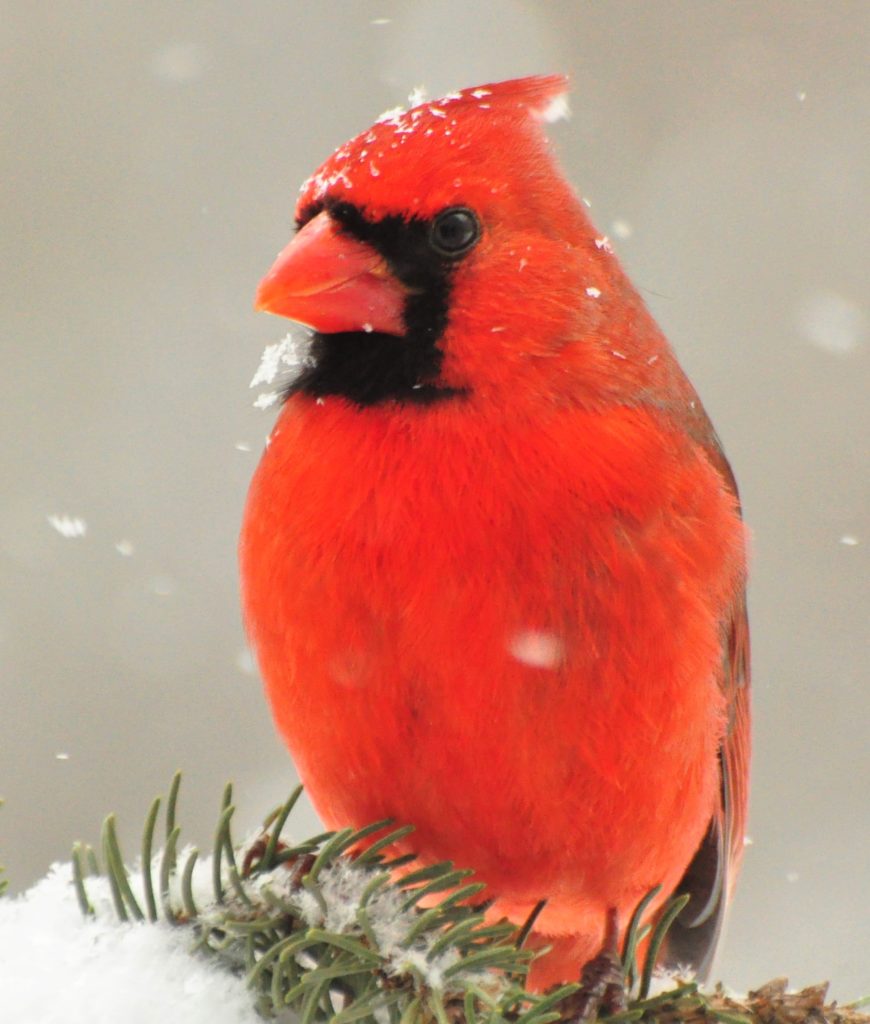Photography courtesy of Lowell Washburn, all rights reserved.
Sub-zero temperatures. Drifting snow. Winds gusting to forty-five. Near zero visibility. How’s that for a chilling winter combo? But those were the exact conditions we endured last weekend when a major winter storm system bulldozed its way across the continent’s midsection. I’m guessin’ there were a lot of Iowans who were wishing they were someplace else.

A female cardinal endures the brutal winter storm conditions that swept across northern Iowa last weekend.
Looking through my cozy dining room window, I wondered how anything could survive out there. It’s the same thing I always wonder when whiteout weather conditions grip the landscape. When the storm finally ends, I also never fail to marvel at how backyard birds suddenly reemerge to resume business as usual. How do they manage to weather the storm?
For Iowa birdlife, winter survival tactics are nearly as varied and interesting as the species themselves. Their first trick is simple. In order to beat subzero cold, most birds consume all the food they can get their little beaks on. There’s no calorie counting with this crowd. Fat and carbs are a wintering bird’s best friends. As long as chickadees, nuthatches, and cardinals can locate high energy food sources, they can easily withstand the coldest temperatures. Backyard feeders are never more beneficial than when extreme weather puts survival on the line.

Birds further beat the cold by maintaining an extreme, 105-degree or higher body temperature. For large birds such as wild turkeys or pheasants, maintaining those temperatures presents less of a challenge than it does for dinky, bundle of fluff birds weighing less than an ounce. Most large birds also gain an early advantage on the cold weather months by slabbing on layers of fat during fall. Waterfowl – like Canada geese and mallard ducks – become downright obese by early December. Once harsh winter weather arrives, these extra reserves allow heavyweights – such as wintering trumpeter swans — to go for days without eating. When temperatures really go to the basement, waterfowl further conserve energy by tucking their bills into back feathers. This simple trick allows birds to breath the energy saving, preheated air trapped beneath interlocking layers of down.

But while the biggest birds can afford to dig in and wait for conditions to moderate, most little birds cannot. At the approach of winter storm systems, they kick it into overdrive. With comparatively lower fat reserves and extreme energy demands; species like chickadees, juncos and finches go on all out feeding rampage, swarming backyard feeders and voraciously consuming every bite they can get.
Secure winter habitat is also crucial to survival. At day’s end, birds head for the warmest cover they can find. Ring-necked pheasants sail into cattail marshes, cardinals and juncos snuggle into spruce boughs, woodpeckers disappear into the dark tunnels of natural tree cavities.

But a bird’s daily struggle for survival doesn’t end at sunset. As nighttime temperatures plummet even lower, many birds employ a final measure. Some species go into a torpor; a state of deep, coma-like sleep where energy demands decline as metabolism and internal temperatures temporarily decline. Other birds — like quail and partridge — stay warm by sharing their heat with others. As the sun sets, coveys form into a tight “tails in – heads out” circle. This wagon wheel formation not only conserves communal heat, but provides added security as well, allowing birds to scan for predators from all directions.
There is no denying that winter is a rigorous and dangerous time for all wildlife. During some years, mortality runs high. But given adequate food and cover, enough will survive to replace those loses with the arrival of the spring nesting season.

 Tom Cope
Tom Cope Sue Wilkinson
Sue Wilkinson Susan Judkins Josten
Susan Judkins Josten Rudi Roeslein
Rudi Roeslein Elyssa McFarland
Elyssa McFarland Mark Langgin
Mark Langgin Adam Janke
Adam Janke Joe Henry
Joe Henry Kristin Ashenbrenner
Kristin Ashenbrenner Joe Wilkinson
Joe Wilkinson Dr. Tammy Mildenstein
Dr. Tammy Mildenstein Sean McMahon
Sean McMahon